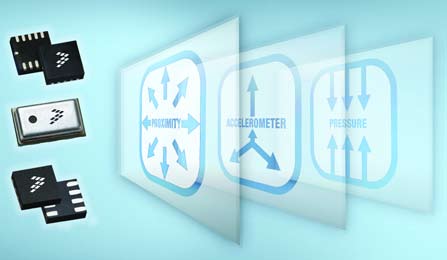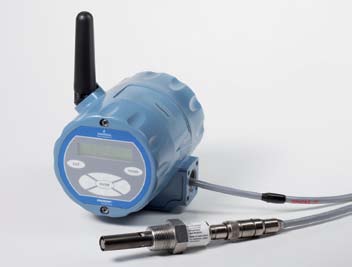
Most of man’s senses were at a time con-strained by distance. He could see, hear, feel, taste or smell only what was near him. However, sensors came and changed all that. These little electronic nodes can act as eyes, ears, skin, nose or taste buds. They can be placed near or far, and even in environments that man cannot stand—biting cold, scorching heat, dangerous cliffs, toxic chemical vats and so on. And they do their owner’s bid—measuring pressure (pressure sensors), temperature (heat sensors), vibration (vibration sensors), speed (motion sensors), brightness (light sensors), etc. What is more, they dutifully send this information to a computer or some other device that collates, interprets and acts on the information sent by several sensors.
Sensors have not only made measurement and monitoring easier but also increased our control over processes, especially critical ones. This has made them imperative in this age and time when quality control and compliance with other regulations are very important. With sensors, the meteorology department can collect detailed information about weather conditions anywhere in the world, estate owners can watch the movement across their fences, process firms can monitor every minute detail of the environment and the assembly line that is required to ensure perfect execution, logistics firms can track their fleet and forest officers can monitor the movement of rare animals. In these and so many other ways, they let us watch the required details keenly and act immediately.
Endless uses, thanks to wireless
From the examples discussed, it is evident that there is no end to the types of sensors or the range of applications each might be put to. The scope has increased immensely, thanks to the wireless generation of sensors. An application is no longer constrained by cumbersome wires, and it is possible to install a sensor practically anywhere.
Vivek Tyagi, country manager-sales, Freescale Semiconductor India explains, “Wireless has gained popularity over its wired counterpart primarily due to its vast applications and lowered cost of setup. Globally, wireless sensors are popularly used for military, medical and environmental applications since these are the most critical areas that need to be addressed. Apart from these, automotive, aerospace, manufacturing and consumer electronics sectors are also heavily dependent on these sensors.”
A sensor hardly operates individually, although each single node is typically an autonomous instrument. Sensor nodes always act cooperatively with other sensors, as a network, with each node communicating with the others and/or with a central computer that acts as the ‘leader.’
Depending on the setup, the sensor nodes might use short-range wireless technologies such as radio frequency identification (RFID) or Bluetooth to communicate with neighbouring sensors, or long-range communication technologies like Wi-Fi to communicate directly with a central computing device. In most cases, however, sensor nodes communicate in ‘hops’—the message hops from one node to the other before reaching the leader.

Another critical part of the wireless sensor network is the standards and specifications that serve as a guideline to set up the network. “There are various standards and specifications for a variety of sensor applications. For example, Freescale’s ZigBee is a proprietary mesh-networking specification used for embedded sensing, medical data collection, consumer devices (television remote controls) and home automation, while WirelessHART is an extension of the highway address-able remote transducer protocol and specifically designed for industrial applications like process monitoring and control,” says Tyagi.
In addition to the radio transceiver or other wireless communication system, a sensor node contains a small microcontroller and a power source. Some of today’s wireless sensors go a step further and charge themselves using power gleaned from the wireless signals or from ambient sources such as the sun or wind, thereby not requiring a separate power source. This not only increases the scope of applications but also makes the use of sensors practically maintenance-free.
In short, wireless sensors and related technologies—sensor nodes, communication and networking technologies, and software applications that make use of the information collected by the sensors—have all developed significantly in the past few years, extending the potential and practical uses of sensors beyond the mundane.
The following snip-pets provide a sample of the kind of developments happening in the wireless sensors space—technological developments, innovative uses and ingenious adaptations!
Quick and easy, green sensor network
At the American Geophysical Union meet held in San Francisco in December last year, a company called Crossbow Solutions demonstrated its award-winning eKo system—a simple, starter-level sensor network kit for gathering environmental data.
The kit consists of sensors, which, in turn, are connected to nodes that read the sensor data and wirelessly transmit it to the base radio. The nodes can send their own information as well as re-transmit data sent from other nodes. The data sent from all nodes is received at the base radio and forwarded to a gateway. The gateway then stores and forwards data from the sensor network, making it accessible via a simple Web-based graphical user interface. While the starter kit has only the basic sensors, environmentalists can expand this array by adding other sensors to precisely measure the parameters they want—be it soil moisture, leaf wetness or the weather.
What makes the eKo system worth a dekko is that the nodes are all solar-powered—making it a green technology. The data can also be viewed anywhere, anytime over the Internet, making it easy for even non-techie environmentalists to use. The alarm settings and alerts can be customised, as can be the assortment of sensors used. This makes the system suitable for hobbyists as well as critical environment-monitoring purposes.
In addition to a reliable wireless mesh communication backbone, the system features the environmental sensor bus (ESB) for plug-and-play sensor capability.
Web 2.0 intelligence expanded
Libelium is a company that offers a range of wireless sensor network solutions for requirements ranging from agriculture and cattle farming to health-care, marketing, industrial processes, logistics and smart metering. The base products comprising their solutions include the Waspmote, a low-power sensor device capable of withstanding adverse environmental conditions, and Meshlium, a multi-tech router that enables connections to ZigBee, Wi-Fi, GPRS and Bluetooth networks in addition to GPS geo-location.
Recently, the company released notes on how to send the data collected by its sensor network to Twitter and WordPress. Basically, it enables the environment to ‘talk’ through a Web presence, updating information about itself in real time.
The Waspmote sensor platform collects the information, while the Meshlium router acts as a bridge between the 802.15.4/ZigBee network and the Internet. This open source solution would make it possible to create a blog or micro-blog for a city, forest or a river that updates itself with information collected by the installed sensors—be it about the temperature of a city, the speed or volume of water flowing through a river, the humidity prevalent in a tropical forest or the movement of exotic animals in the forest.
Some months ago, Libelium also released notes on how to program the Meshlium to automatically send SMS and e-mail alerts based on the sensor data.
Your mobile phone too could be a sensor
Andy Rubin, engineering director, Google, wrote an article on the future of mobiles, based on ideas collated from many experts, and posted it on his blog last year. Therein, he mentions that your mobile phone, if used as a sensor, could reveal tonnes of global patterns and real-time information, very easily.
“Your phone knows a lot about the world around you,” he writes. “If you take that intelligence and combine it in the cloud with that of every other phone, we have an incredible snapshot of what is going on in the world right now. Weather updates can be based on not hundreds of sensors, but hundreds of millions. Traffic reports can be based not on helicopters and road sensors, but on the density, speed and direction of the phones (and people) stuck in the traffic jams.”
[stextbox id=”info”]“Globally, wireless sensors are popularly used for military, medical and environmental applications since these are the most critical areas that need to be addressed”[/stextbox]
Looks like somebody has decided to try this out too! The National Science Foundation, USA, has awarded a $1.5-million grant to CitiSense, a cell-phone-based sensor network system, to develop and deploy hundreds of small environmental sensors that can be carried by the public in San Diego. These sensors will use cellphones to relay data. In addition to environmental sensors, the people can volunteer to wear biological monitors to collect health-related statistics. The information will then be analysed using computing systems and relayed back to the people.
In November 2009, telecom service provider NTT DOCOMO Inc. announced the trial operation of a network of environmental sensors that measure pollen, carbon dioxide (CO2), ultraviolet (UV) sunlight and other atmospheric conditions that can affect human health and daily life. This information will then be provided to companies, healthcare institutions, municipalities, etc, for use in various commercial and educational applications, such as weather forecasting and other information services. The network of sensors appears to be the largest and densest of its kind in Japan.
Gaming console sensor put to different usage
Wiimote is the key control device for Nintendo’s Wii console. It is known for its motion sensing and gesture recognition capabilities. It uses an accelerometer and optical sensor technology to allow users to interact with the on-screen items through gestures or by pointing their fingers.
This device has fired the imagination of many a hacker. Last year, a developer called Johhny Chung Lee turned it into a finger-tracking device and a touch-screen whiteboard. You can do it too, thanks to his do-it-your-self instructions available at ‘http://johnnylee.net/projects/wii/’.








